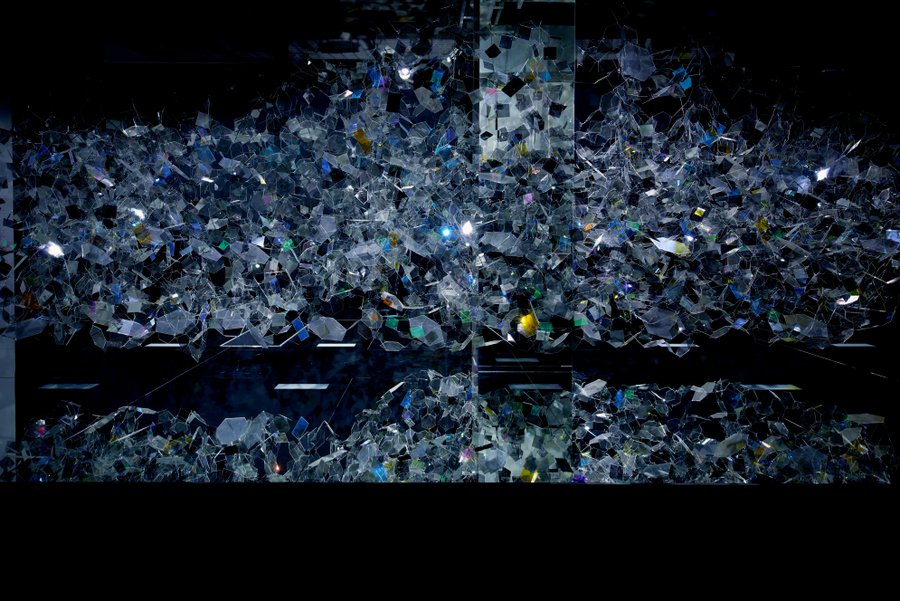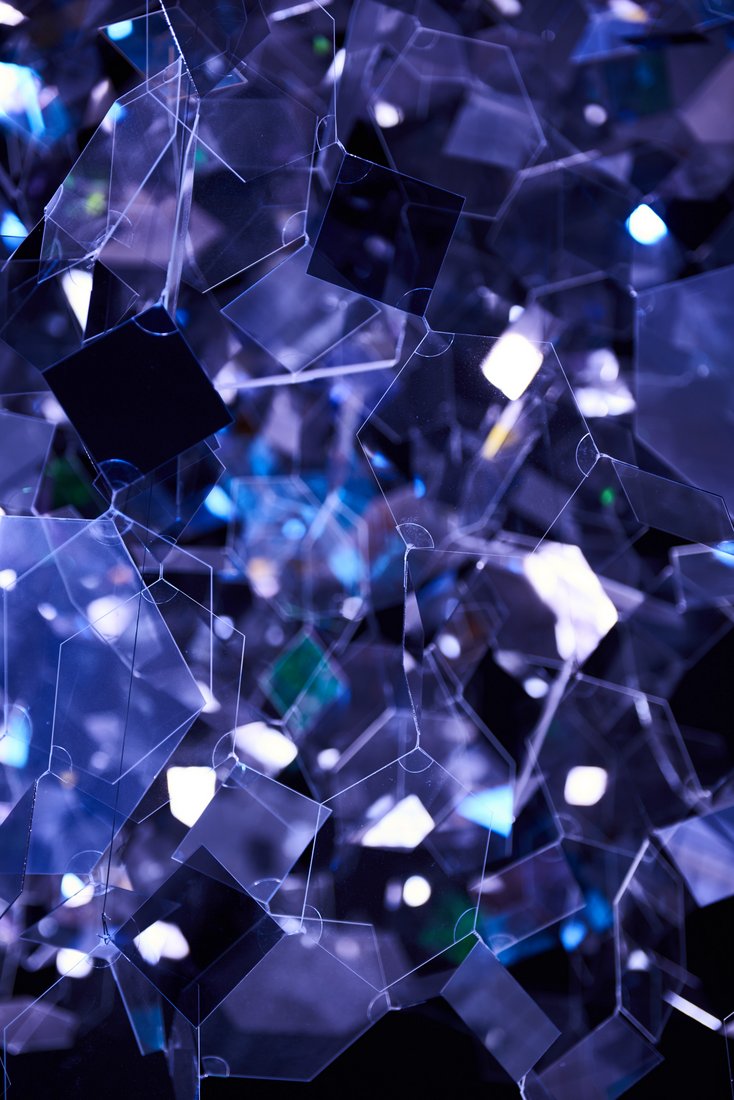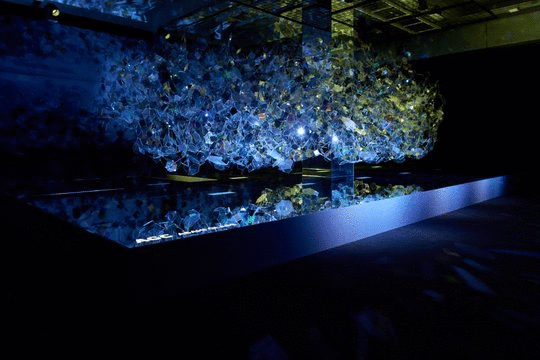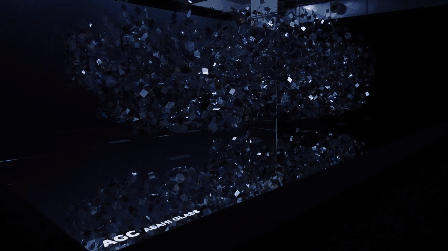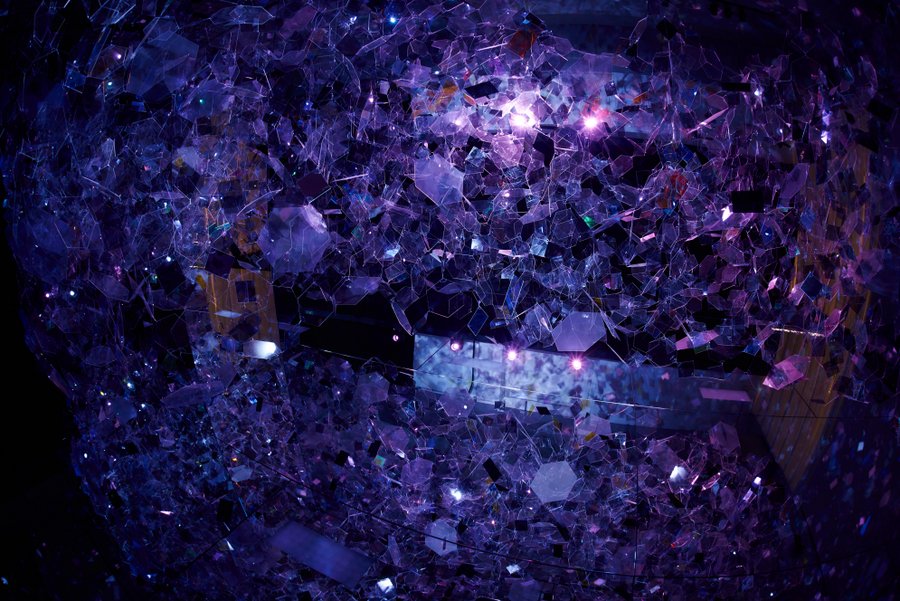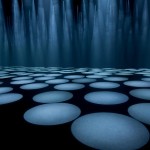Perhaps you learned in physics class that glass is a material composed primarily of silicon and oxygen or, if you want to get nerdy, SiO2. But what does that really mean? And, more importantly, what would it look like? Using 5000 pieces of thin glass suspended in mid-air, a Japanese designer has recreated the non-crystalline (amorphous) molecular structure of glass in a model one billion times its actual size.
The installation is titled “Amorphous,” and refers to the tempering process of forming glass. In essence, when a solid substance is heated and then cooled suddenly the molecules are not allowed to organize into a crystalline structure, thereby creating the smooth, transparent substance we know as glass. In an incredibly meta attempt to represent glass using glass, Japanese designer firm Nosigner has collaborated with Japanese glass manufacturer Asahi Glass to create the installation at Milan Design Week this year.
“Glass is a material that you come across every day,” says the company. “The installation reveals the incredibly rich and complex microcosm inside glass using the latest glass technology.” They’re referring to their chemically strengthened glass, which is stronger and lighter compared to conventional glass and is often used for smartphone and tablet covers. “Every angle reveals a different hue, and every surface beautifully reflects light.
It’s on display at Superstudio Più GALLERY through April 17, 2016.
This article is part of a series on our coverage of Japanese design at the 2016 Milan Design Week. You can see all our picks here.

